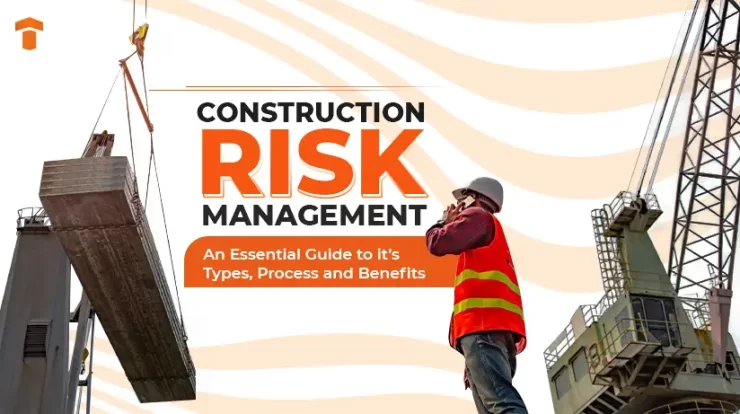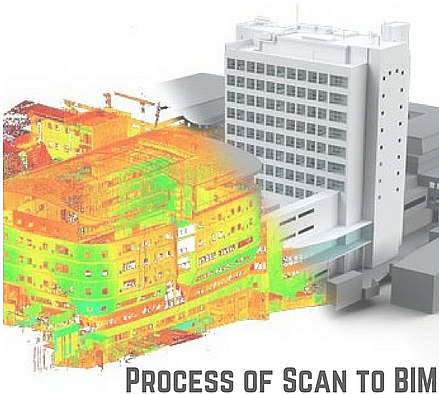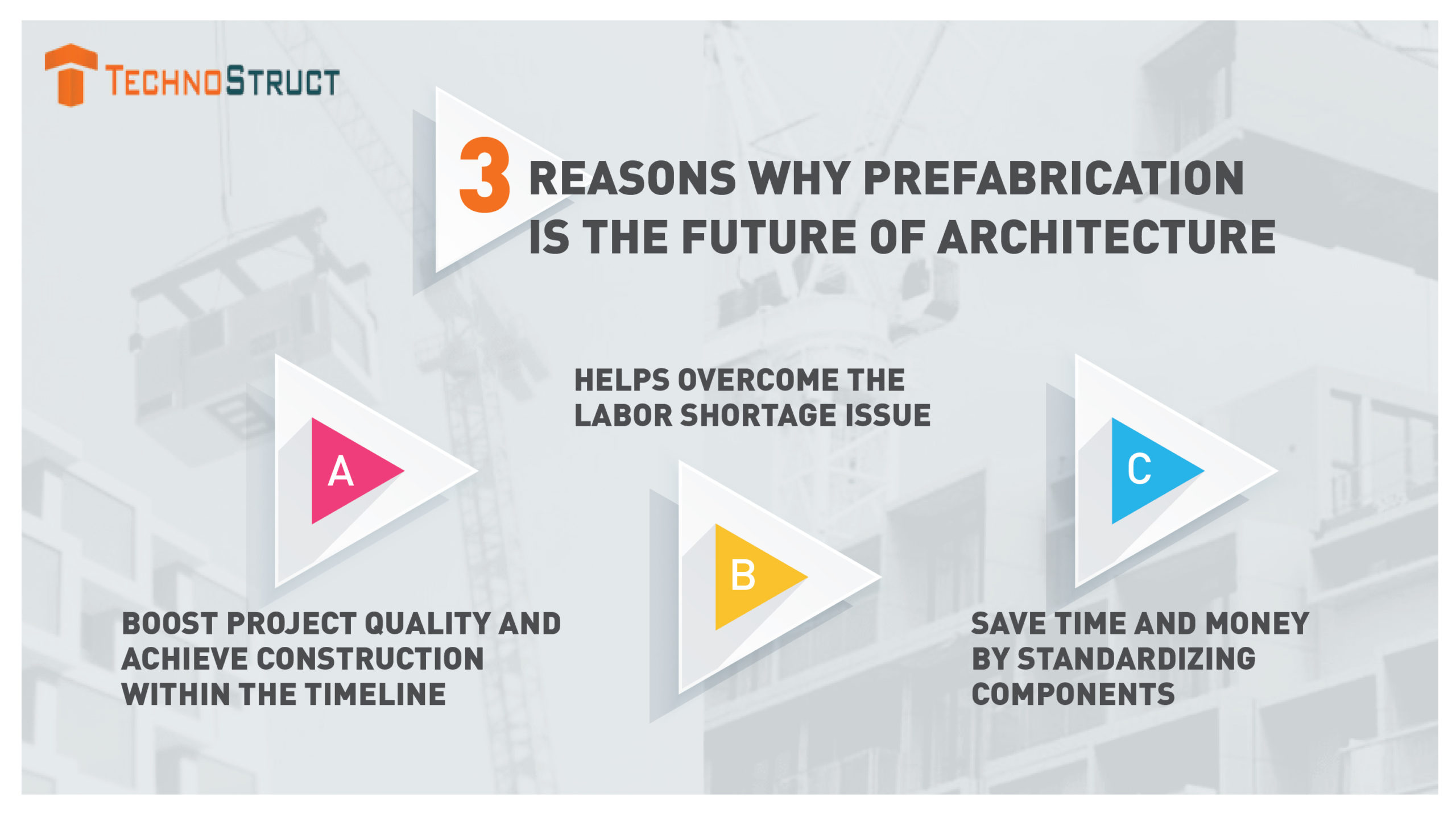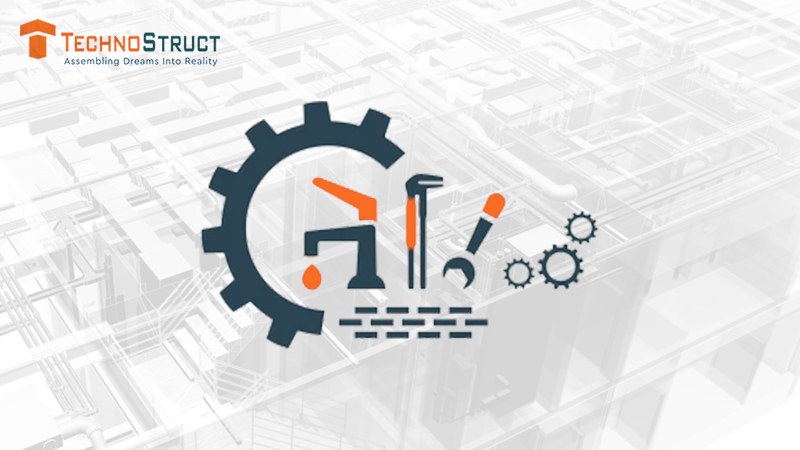
Construction projects are always prone to various types of risks. All the projects must tackle the challenges regarding worker safety, unforeseen natural calamities and contractual obligations, etc. Effectively handling such risks is crucial for the success of every construction and hence, construction risk management is paramount.
Construction firms chalk out strategies to address and reduce the risks involved in the AEC projects. In this write-up, let’s discover the types, process,es and benefits of construction risk management.
What is Construction Risk Management?
Risk management in construction includes identifying, mitigating, and monitoring the risks associated with construction projects. Proactive risk assessment and planning are the two key factors in reducing issues in AEC projects.
Managing risk in the construction sector is complex due to the huge size of the project and the large number of people involved. A wrong decision can cause safety issues, delay the project, or affect the relationship with the client.
Thus, create a concrete plan before the beginning of the construction phase and assign responsibilities to crew members to minimize the chances of risks.
Common Types of Risks in Construction
Here are a few categories of various risks involved in the AEC projects:
Safety Risk
Heavy machinery, tight schedules, and adverse weather conditions can threaten the safety of workers on the job site. An accident can occur due to failure or mishandling of the machine and trying to finish a task in a hurry.
Making the construction site free of such issues is essential. Assigning the most skilled professionals to operate a machine and streamlining the task process is vital to reducing such problems. Also, you should take all safety measures to mitigate the risks of weather hazards.
Financial Risk
Financial issues can also have a major effect on the construction projects. Increased material costs, delayed payment from the client and fraud, etc. can disrupt the cash flow and halt operations. Create solid financial plans before beginning the project and avoid such issues.
Legal Issues
Land disputes, contract violations and modifications in industry-related laws and regulations, etc. can create legal problems for the project. Furthermore, a construction project can also be put in jeopardy due to import-export limitations or because of safety and pollution rules.
Identifying such issues early is key to better construction risk management. You can begin by maintaining complete documentation and records and conducting regular site audits.
Logistic Problems
Lack of construction equipment availability due to inadequate transport facilities can cause delays and loss in the project. Having enough vehicles to fulfill various requirements on a construction site is crucial for the success of a project.
Technical and Design Issues
Delays or lack of material and resource availability can prevent you from creating the product as per the client’s requirement. Unfinished design and insufficient site assessment can also contribute to the same.
All of it can affect the relationship with the client and can cause losses. Get all the resources and materials on board before the start of construction. Moreover, obtain approval on designs to ensure client satisfaction.
Process of Construction Risk Management
Find out below the key factors involved in the process of risk management in construction:
Identify the Issues
Identify the potential issues in the preconstruction phase for better construction risk management. Arrange a meeting with the team and stakeholders to discover all the negative scenarios.
Furthermore, hold regular meetings with the team members as well as stakeholders to assess the risks and progress.
Assess the Impact
Ascertaining the likelihood, frequency and impact of the possible risks can prevent numerous problems from occurring. To take the first step towards the same, ask yourself these questions:
⦁ What is the worst thing that can affect the project?
⦁ What are the chances of such events occurring?
⦁ How much that risk can affect the project?
Also, assess your past projects to learn from them for effective construction risk management.
Create a Risk Management Strategy
In this phase, focus on finding out whether you can reduce, avoid or just accept a risk. Floods and earthquakes, etc. are the types of risks, that you must accept, however, you must also have a contingency plan.
Chalk out well-defined policies and response procedures. Include communication plans, roles and responsibilities and particular actions that are essential to prevent further issues and initiate recovery.
Leverage Technology to Mitigate Risks
Incorporating construction risk management software in the process plays a significant role in reducing the risks of a project. These software automate the process of risk management as they have in-built templates to track the real-time data.
BIM (Building Information Modeling) software enable the architects, designers and project managers to predict the issues before the construction.
Review the Process for Better Decision Making
Continuously reviewing the process is one of the most important steps to ensure better construction risk management. Teamwork, collaboration and participation make sure the right issues are assessed and addressed. It can contribute to the success of a project.
Benefits of Construction Risk Management
Improved Worker Safety
Construction sites are prone to various accidents and environmental hazards. You must have a well-trained workforce, contractors and project managers. Taking effective measures for risk management on the construction site can improve the safety of workers.
Prediction of Issues
Construction risk management can make a firm more proactive, future-ready and excellent at recognizing potential problems. A company can experience improved financial performance and lower expenses as employees may feel an increased sense of accountability.
Better Budgeting
Calculating risks before starting a construction project can lead a company to manage its finances well. They can identify the areas where not to invest the money and feel empowered to make efficient budgets.
Process Improvement
Construction companies can identify inefficiencies in their operations through construction risk management. For example, if a department is not fulfilling the targets, then the risk management team recommends improvements to them. It can result in efficiency in operations.
Recognizing the risks can also help the construction firms have an edge over the competitors and boost profits.
Conclusion
Construction risk management is essential for the AEC industry as it assists in creating a safe work environment for everyone. Practicing it is also important to save time as well as money. Furthermore, effective coordination and communication among all stakeholders is a necessity for effective risk management.
FAQs
Q 1: What are the benefits of construction risk management?
Ans: Major advantages of risk management on construction sites include, enhanced worker safety, early prediction of the problems, improvement in operations and better profits.
Q 2: What is the construction risk management process?
Ans: It is a key process to identify risks and analyze the impacts and control risks. A company also assesses potential finance costs and a way to recover damages should the loss occur.
Q 3: What are the types of construction risks?
Ans: Safety risk, financial risk, legal risk, logistic issues and problems pertaining to design are a few of the major construction risks.



